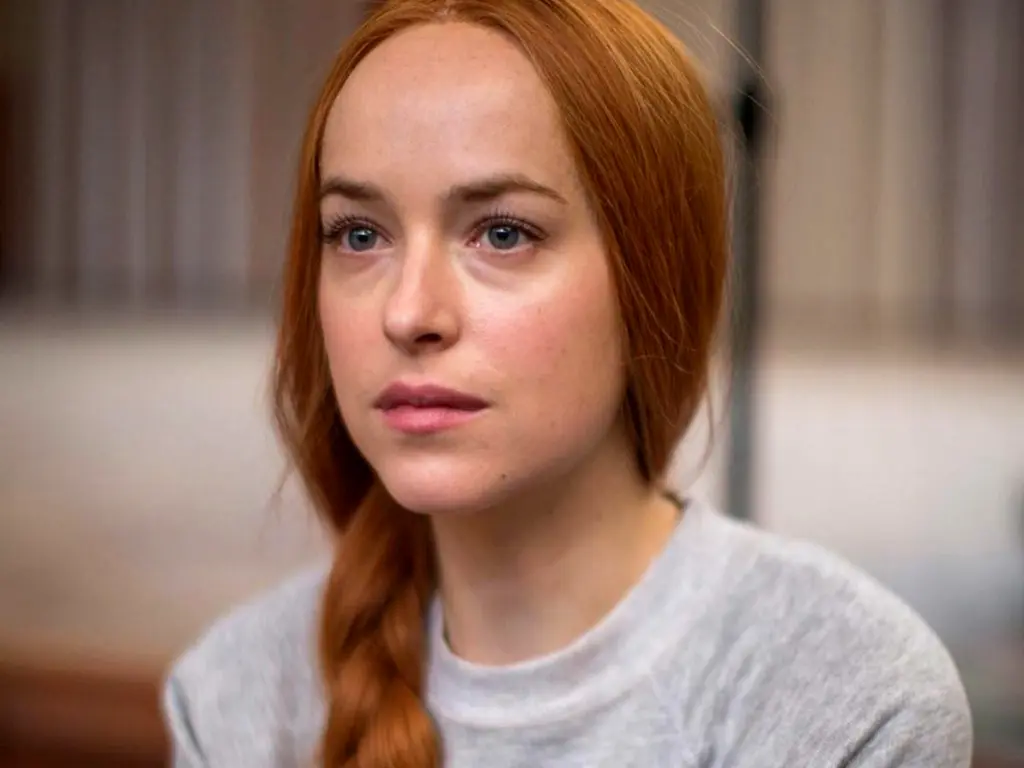Anticipation.
Equal parts enthusiasm and dread.
Enjoyment.
Old danse macabre, new twist.
In Retrospect.
A beautiful, resonant feminist fairy tale at least half grounded in German postwar realities.
‘Simulacrum’ is the single word that elderly psychologist Dr Jozef Klemperer (played by one Lutz Ebersdorf, a pseudonym for Tilda Swinton) writes in his case notes as he listens to an unhinged Patricia Hingle (Chloë Grace Moretz) rave in his apartment cum consulting room.
In this opening sequence to Luca Guadagnino’s long-gestating remake of Dario Argento’s baroque horror classic from 1977, the very scenario that Patricia is laying out – that the Helena Markos Tanzgruppe is in fact a coven of witches – makes it clear that we are watching a simulacrum, or imitation of the original. Yet no copy can ever be exactly the same as its original, and even if the ominous site of the Helena Markos Tanzgruppe, with its mirrored interior walls, is haunted by the reflective curse of comparisons, it also dances to its own tune.
Get more Little White Lies
Mennonite-raised Susie Bannion (Dakota Johnson) joins the company and quickly finds her way into the lead part of Volk, the group’s signature routine since it was created by the school’s principal instructor Madame Blanc (Swinton) in 1948. Susie is also caught in the middle of a crisis of leadership occuring behind closed doors. The school’s all-female staff are divided as to whether the ageing, ailing founder Helena Markos (Swinton) should remain at its head, or whether her protégée Blanc should take over – although the majority remains with Markos.
These tensions within reflect those without. The film is set not in the fairy tale Freiburg of Argento’s original, but in a rainy, snowy Berlin in the year of the original’s release. It’s an expressly divided Berlin, still caught in the guilt and shame of World War Two while facing an ongoing confrontation between the establishment and, in its last gasp, the Baader-Meinhof Group.

The school is situated alongside that great symbol of German division, the Berlin Wall, through which Jozef regularly passes to visit the East German dacha where he had once spent happy time with his Jewish wife Anke (Jessica Harper, who played Bannion in the original) before she vanished in 1943. Jozef ’s abiding, backward- looking love for Anke is enshrined in the graffito of an initialled heart, itself divided across the corner of the dacha’s outer walls.
The impulse of just over half the witches to vote conservatively for Markos, or of Jozef to dwell in a romance long past, mirrors the attachment of so many viewers to Argento’s dazzlingly brilliant 41-year-old film, even as Guadagnino strives, like Susie, to go ‘off book’ and introduce change while still respecting what has gone before.
In the practice sessions for the traditional Volk, a balance between these conflicting forces is openly rehearsed, even as the film subdues the original’s polychromatic colour scheme, mutes its overwhelming score (replaced here with Thom Yorke’s quieter melancholic melodies) and stretches out its duration, in an active effort to ring in its own changes. Though split down the middle between mimetic tradition and revolutionary variation, nothing about this simulacrum is half-hearted.


















